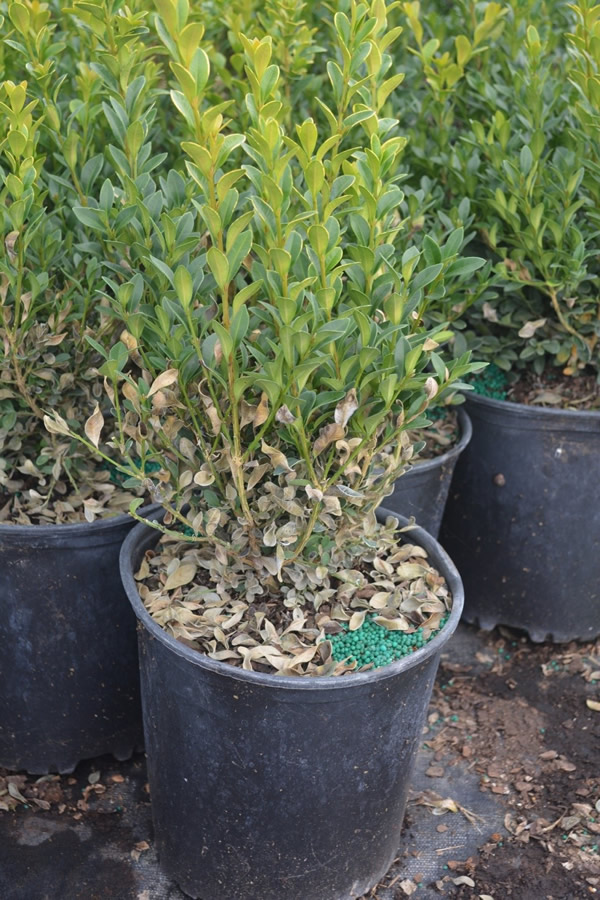Issue 3, May 19, 2021
Avoiding Boxwood Blight
Boxwood blight is a fungal disease that continues to pose a serious threat to boxwood plants in nursery production and landscapes. To date, we have only detected isolated incidents of boxwood blight in Illinois. Our goal remains to avoid introducing the pathogen, and to eradicate any future detections. If you maintain a landscape with existing boxwood shrubs, then boxwood blight should be high on your list of diseases to avoid. It is much easier to prevent a boxwood blight introduction than to control it. Start by knowing the common boxwood blight symptoms and signs highlighted in Plant Clinic Fact Sheet: Boxwood Blight Detection. You should be familiar with the common boxwood pests that have symptoms that might be easily confused with boxwood blight: Boxwood Blight Look-alikes.
If you suspect boxwood blight, please collect a representative sample(s). Submit the sample to the University of Illinois Plant Clinic using the directions provided in within Plant Clinic Fact Sheet: Boxwood Blight Detection.

Photo 1. Boxwood with boxwood blight defoliation symptoms
Avoiding this disease requires an understanding of how it spreads. The pathogen can move short distances within a plant or to nearby boxwood shrubs via splashing irrigation or rainfall. However, the disease moves over longer distances and is most likely to enter a new landscape through infected plant material or on contaminated tools, clothing, or vehicles.
Be cautious when adding new boxwood or pachysandra (also a host) plants to a landscape. Always purchase boxwood plants from a reputable nursery that strictly adheres to boxwood blight best management practices. Closely inspect plants for symptoms of boxwood blight prior to purchasing. These new plants should be quarantined for at least one month before installation. Scout the quarantined plants regularly for common boxwood blight symptoms. Do not spray the quarantined plants with fungicides. Fungicides will suppress symptom development. Your goal should be to allow any infected plants to develop symptoms so that you know not to plant them into the landscape.
Scout existing boxwood plantings for symptoms and signs before pruning. Avoid working with boxwoods when they are wet. Collect and remove debris from pruning or shearing operations that involve symptomatic plants. Burn or bury the debris, do not compost. Clean and disinfect pruning tools, equipment, shoes, and clothing between plantings and before moving to a new landscape.
The Horticultural Research Institute developed a set of Best Management Practices for Boxwood Health. Their guidelines are for Production as well as Landscape Management. You can download the document via the following link:
https://irp-cdn.multiscreensite.com/5d757b5b/files/uploaded/HRIBoxwoodHealthBMPs-V3-2020.pdf
Author:
Travis Cleveland